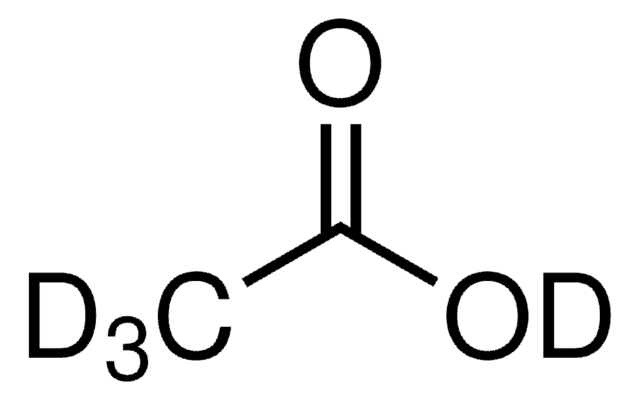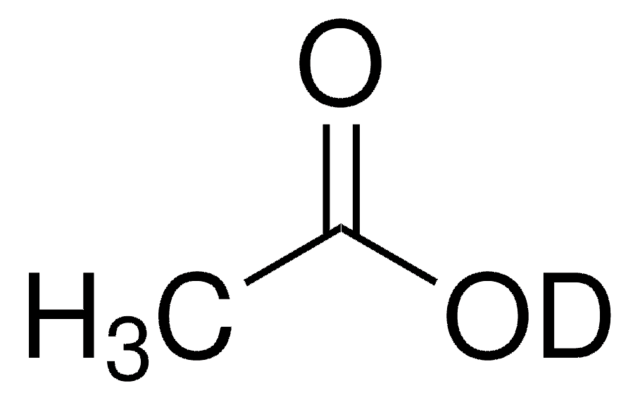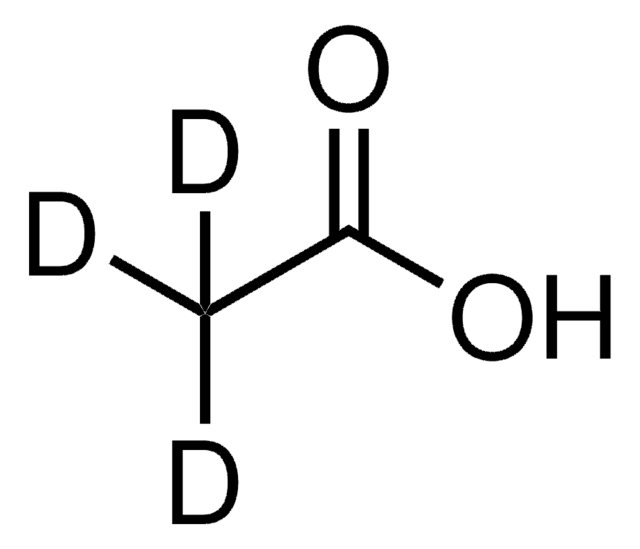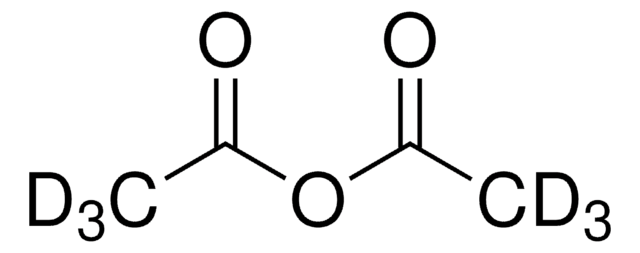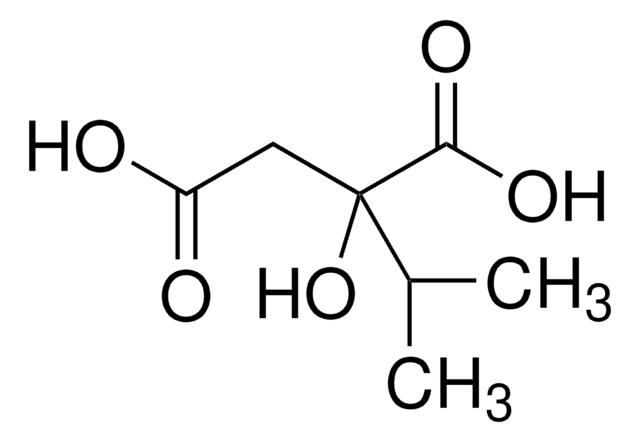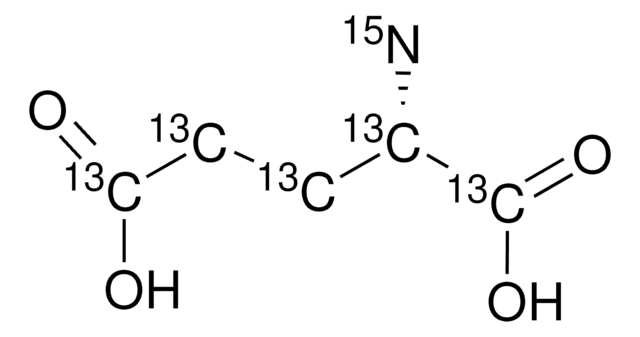176079
Sodium acetate-d3
99 atom % D
Synonym(s):
Acetic-d3 acid sodium salt
Sign Into View Organizational & Contract Pricing
All Photos(1)
About This Item
Linear Formula:
CD3CO2Na
CAS Number:
Molecular Weight:
85.05
EC Number:
MDL number:
UNSPSC Code:
12352005
PubChem Substance ID:
NACRES:
NA.12
Recommended Products
isotopic purity
99 atom % D
form
crystals
technique(s)
NMR: suitable
bio NMR: suitable
protein expression: suitable
mp
>300 °C (dec.) (lit.)
mass shift
M+3
SMILES string
[Na+].[2H]C([2H])([2H])C([O-])=O
InChI
1S/C2H4O2.Na/c1-2(3)4;/h1H3,(H,3,4);/q;+1/p-1/i1D3;
InChI key
VMHLLURERBWHNL-NIIDSAIPSA-M
Looking for similar products? Visit Product Comparison Guide
Related Categories
Storage Class Code
11 - Combustible Solids
WGK
WGK 3
Flash Point(F)
Not applicable
Flash Point(C)
Not applicable
Choose from one of the most recent versions:
Already Own This Product?
Find documentation for the products that you have recently purchased in the Document Library.
Customers Also Viewed
Frederik Fleissner et al.
Advanced biosystems, 4(11), e2000111-e2000111 (2020-11-03)
Intermediate filament (IF) proteins are a class of proteins that constitute different filamentous structures in mammalian cells. As such, IF proteins are part of the load-bearing cytoskeleton and support the nuclear envelope. Molecular dynamics simulations show that IF proteins undergo
Will Kew et al.
Food chemistry, 298, 125052-125052 (2019-07-02)
Scotch Whisky has been analysed as a complex mixture in its raw form using high resolution Nuclear Magnetic Resonance (NMR) and previously developed water and ethanol suppression techniques. This has allowed for the positive identification of 25 compounds in Scotch
Daisuke Mikami et al.
Biochimica et biophysica acta. Molecular and cell biology of lipids, 1865(6), 158666-158666 (2020-02-18)
Short-chain fatty acids (SCFAs), including acetate, butyrate, and propionate, are produced when colonic bacteria in the human gastrointestinal tract ferment undigested fibers. Free fatty acid receptor 2 (FFA2) and FFA3 are G-protein-coupled receptors recently identified as SCFA receptors that may
Thomas W Hoffmann et al.
The ISME journal, 10(2), 460-477 (2015-07-29)
Studying host-microbiota interactions are fundamental to understanding the mechanisms involved in intestinal homeostasis and inflammation. In this work, we analyzed these interactions in mice that were mono-associated with six microorganisms that are representative of inflammatory bowel disease (IBD)-associated dysbiosis: the
Michael A McMechen et al.
Molecules (Basel, Switzerland), 24(10) (2019-05-22)
Cα to N substitution in aza-amino acids imposes local conformational constraints, changes in hydrogen bonding properties, and leads to adaptive chirality at the nitrogen atom. These properties can be exploited in mimicry and stabilization of peptide secondary structures and self-assembly.
Articles
Solid-state NMR on Larger Biomolecules; Sigma-Aldrich.com
Our team of scientists has experience in all areas of research including Life Science, Material Science, Chemical Synthesis, Chromatography, Analytical and many others.
Contact Technical Service